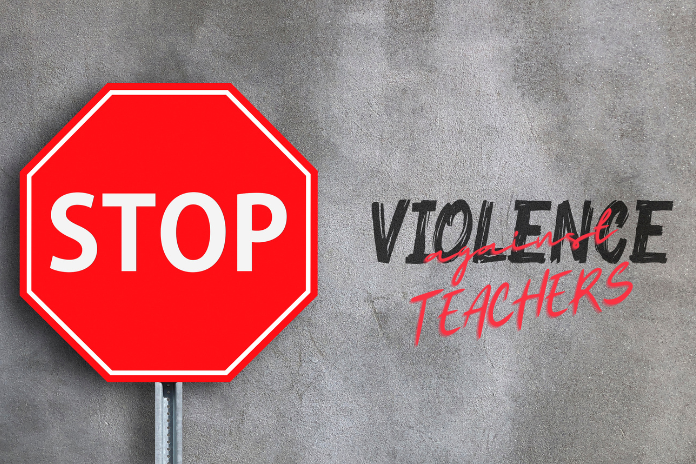Common efforts against violence in Education
Published:
An important ESSDE decision to review the Guidelines to tackle violence at the workplace comes at a time when the education sector is mourning the recent murder of the French teacher, Agnès Lassalle, killed by a student. This case has been added to the long list victims to increasing workplace violence at the hands of third parties in education, signifying an urgent need to act in their diffence.
On 15 March 2023, European Sectoral Social Dialogue Committee in Education (ESSDE) committed to reviewing the Multi-sectoral Guidelines to tackle Third-Party violence and harassment in the workplace, signed, among others, by European Sectoral Social Partners in Education in 2010. The Guidelines aim to uphold actions by employers, workers, and their representatives to prevent, reduce, and mitigate violence from third parties and its consequences.
After more than a decade since their signature, there is still low implementation awareness of the Guidelines. Besides, growing cases of third-party violence in the workplaces amid an evolving world of work on the impetus of digitalisation and the COVID-19 pandemic calls on sectoral social partners in education to develop up-to-date and effective tools to prevent and counter violence in the education sector. In particular, the Multi-sectoral Guidelines need to be updated to better tackle gender-based violence and violence in digital contexts and to provide a deeper collective understanding of the various forms of cyber-violence.
During the ESSDE meeting, Jane Pillinger, external researcher to the multi-sectoral social dialogue project The role of social partners in preventing third-party violence and harassment, presented the project’s main research findings, showing increasing cases of violence in the education sector. Indeed, according to a national study by the Danish education trade union, DLF, and the National Research Centre on Work Environment, 56% of teachers reported aggressive behaviour in pupils in the form of harassment, threats and violence, resulting in higher levels of teacher burnout. Piotr Kowzan’s study of school violence in Denmark and Poland showed that school violence had become an increasingly widespread phenomenon. Besides, the German education trade union, VBE, found that school violence affects 1 in 4 of all education institutions. The survey further showed that although 40% of employers were concerned about violence and harassment, only 25% had implemented measures to prevent them. Rising levels of violence from third parties were also documented in a survey carried out by the Bulgarian Union of Teachers, SEB, where 65% of teachers reported that they had suffered psychological violence and 2.5% physical violence by students, parents or their relatives.
The ESSDE decision directly implements the Joint Statement for the 10th anniversary of the Guidelines, where ETUCE and EFEE committed to ensuring targeted results-oriented policy on third-party violence in the education sector. It further builds on the long-standing cooperation of Sectoral Social Partners in Education on preventing and tackling violence in education, including from third parties. Indeed, after committing to the Multi-sectoral Guidelines, ETUCE and EFEE developed a Joint Implementation Guide to Prevent and Mitigate Third-Party Violence and Harassment in Schools (2013). The prevention of violence from third parties also stands at the core of the Online interactive Risks Assessment tools (OiRAs) developed by ETUCE and EFEE in collaboration with the EU-OSHA for early childhood and secondary education. More recently, the ESSDE Committee adopted the Statements on the Opportunities and challenges of digitalisation for the education sector (2021), including a commitment to support education institutions, teachers, academics, and other education personnel in addressing digital cyberviolence and harassment.
Commenting on the event, Susan Flocken, European Director of ETUCE, stated: “Today’s commitment represents an important step towards improving the fight against increasing violence in education. As the representatives of millions of teachers and educational personnel in Europe, we are truly committed to combatting the atrocious violence in education institutions that are responsible for great psychologic and physical pain and the shrinking status and attractiveness of the teaching profession.”